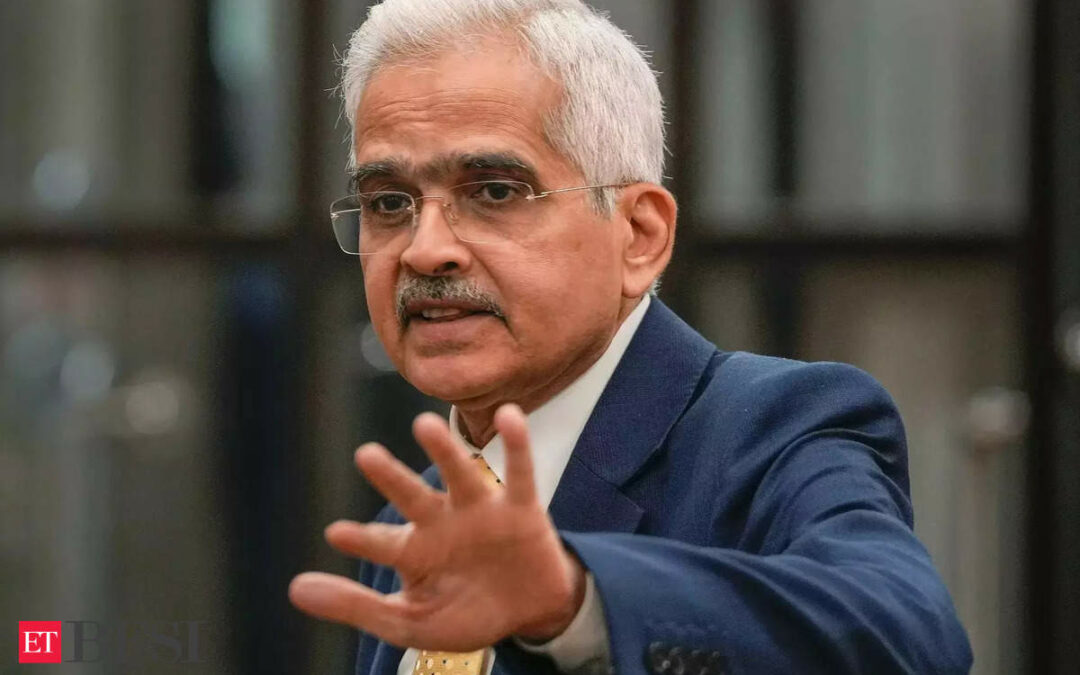The Reserve Bank of India (RBI) is likely to keep interest rates unchanged this week as high food prices prevent any tilt toward softer policy, but easing core inflation and a global turn toward lower borrowing costs could make a case for the central bank to shift to a neutral stance in the next quarter that coincides with the country’s traditionally busy economic season.
An ET poll consisting of 12 respondents unanimously predicted the RBI’s Monetary Policy Committee (MPC) would keep the repo rate unchanged at 6.50% at the end of its three-day meeting on August 8. This would mark the ninth consecutive bi-monthly meeting in which the rate-setting panel could maintaine a status quo on rates.
The repo rate is the rate at which the RBI lends to banks.
“The June-July inflation undercurrents validate the MPC’s concerns over the near-term price outlook. To recall, June CPI inflation rose 5.1% yoy …food and beverages added most to the headline, rising 8.4% from 7.9% before on higher vegetables, pulses and certain protein categories,” said Radhika Rao, senior economist, DBS Bank.
The MPC’s target for headline CPI inflation is 4%. The price gauge, however, has remained above that mark for 57 months in a row, with supply-side disruptions caused by the pandemic and the Russia-Ukraine war being the key drivers of higher consumer prices over the past couple of years.
More recently, a disappointing start to the monsoons and a protracted heatwave pushed up vegetable prices, while a telecom tariff hike could exert upward pressure on coming inflation prints, analysts said.
Stance change, finally?
While none of the polled entities expected a change in the benchmark policy rate, one respondent — HDFC Bank — expected the RBI to change the stance of monetary policy to a neutral one from the prevailing stance of withdrawal of accommodation.
“Core inflation has been under 4% for some time now. While there are concerns about the sequential momentum of headline CPI inflation, the year-on-year headline inflation numbers will be below 4% going ahead due to the base effect.
Moreover, we don’t see much risk of spillover from food inflation into generalised inflation,” said Sakshi Gupta, principal economist, HDFC Bank, listing out the factors that could prompt a change in stance to neutral.
Core inflation strips out the volatile components of food and fuel, and as such, is considered by some as a more reliable gauge of underlying demand conditions in the economy.
A neutral stance allows the RBI to raise or lower interest rates, depending on the inflation trajectory, unlike the current stance of withdrawal of accommodation that rules out rate cuts.
Discussions about when the RBI may shift to a neutral stance — an event that markets would welcome as either a precursor or an accompaniment to a rate cut — have gained steam after an article in the central bank’s July Bulletin.
THE 4% HOLY GRAIL?
In the article, which counts RBI deputy Governor Michael Patra as one of the authors, central bank economists said that inflation does not need to reach 4% and stay there before monetary policy considers a change in stance. Rather, an enduring movement toward the target should provide signals that forward-looking monetary policy can respond to, the article read.
“Things are moving in the right direction — for example, a credible fiscal deficit path in budget, the satisfactory progress of monsoon and moderation of retail credit growth… overall, we are coming close to a change in stance, but not in this policy,” said Soumyajit Niyogi, director, India Ratings and Research.
For RBI, the global interest rate scenario is also a more favourable one now. Two-and-a-half years after the Federal Reserve embarked on its most aggressive monetary tightening cycle in decades, the US central bank is poised to deliver a rate cut in September. The BoE and the European Central Bank have cut rates.
While RBI has made it clear it is driven by domestic inflation considerations, rate cuts in advanced economies mean the Indian central bank can breathe easy when it comes to maintaining adequate rate differentials with advanced economies. Rate differential plays a key role in rupee’s exchange rate, with a shrinking gap typically leading to weakness in the local currency.











